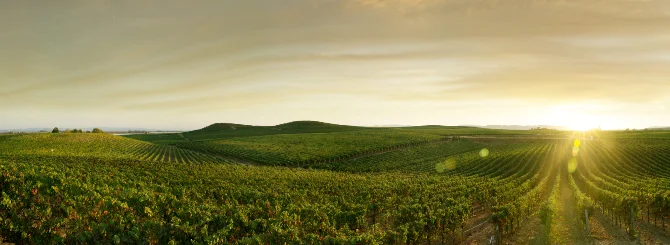The long-protected Napa wine industry faces a chilly new political atmosphere.
W. Blake Gray | Monday, 18-Sep-2023 | Wine-Searcher |
Napa’s endless vineyards have long been protected from the threat of other industry, but non-wine locals are biting back.
Wine has made Napa Valley rich and powerful. Wine has made the valley California’s second-leading tourist attraction, after Disneyland.
But there has always been tension between the wine industry and environmentalists, and anger from non-industry residents who hate dense tourist traffic in a still-rural area.
For decades, the wine industry won every fight. Almost every project was eventually approved. Environmentalists fought development but constantly found themselves one vote short on the Board of Supervisors. The 2022 election has apparently changed that. Two new members of the Board of Supervisors have shifted the balance of power, and suddenly the Napa wine industry is on the defensive.
Three recent cases exemplify this. The main one concerns a proposed vineyard called Le Colline on Howell Mountain that was rejected by the Board of Supervisors, who sided with environmentalists over the Farm Bureau.
Also, the county is pursuing a lawsuit against vintner Lindsay Hoopes to prevent her winery from allowing customers to drink wine on the premises, even though a judge said the suit is unlikely to succeed.
And high-end vintner Jayson Woodbridge is suing the county for refusing to allow him to drill wells on his four vineyards unless he agrees to limit the amount of water he draws from each. Woodbridge claims the county demands that anybody who drills a new well use 70 percent less water than vineyards with existing wells.
Fights over issues like this are nothing new in Napa Valley. What’s new is that the wineries aren’t winning.
“Frankly, people just got greedy,” said former St Helena mayor Geoff Ellsworth, a longtime local environmentalist. “So much of this goes back to the changes in the definition of agriculture. When the changes came to the definition of agriculture, all of a sudden it became a lot more lucrative to be in the wine industry. You had people come in and take advantage of the situation.”
Stu Smith, co-owner of Smith Madrone Vineyards on Spring Mountain, could hardly be further from Ellsworth politically. Smith joined the Hoopes lawsuit on her side, and as a longtime advocate for property rights, disagrees with the county on the Le Colline decision. He sides with Woodbridge too. But he agrees that right now, the wine industry is on the defensive for the first time in a long time.
“We have a community that wants the benefits of the wine industry, the beauty of it, the lifestyle, but they don’t want the business of it,” Smith told Wine-Searcher. “A lot of us feel as though the county Board of Supervisors is not only not our friend; they’re working against us.”
The key votes in November came in two supervisor races. For one of the county’s five seats, Diane Dillon, who the Napa County Farm Bureau named its Friend of Agriculture in 2021, decided not to run for a sixth term. She endorsed Anne Cottrell, who she had nominated to the planning commission eight years earlier. Cottrell won the seat, defeating Yountville mayor John Dunbar, whose platform was much more industry-friendly, 65 to 35 percent. She now represents District 3, which includes the entire rural north end of the county as well as the cities of St. Helena and Calistoga.
In the most crucial showdown between the industry and its opponents, Joelle Gallagher beat Suzanne Besú Truchard 55 to 45 percent to take over District 1, which includes part of the city of Napa. Truchard is a real estate broker who married a scion of the Truchard winery family. She raised the most funds of any candidate. Gallagher was not an industry enemy: she had been executive director of the Napa County Farm Bureau and the Napa Valley Grapegrowers. But she ran on a pro-environment platform. And for Napa politics, it must be pointed out that what wineries want is often not the same as what grapegrowers want. Both want property rights but the grapegrowers organization doesn’t care about fighting for wineries to be allowed more visitors.
Tipping the scales
Le Colline is the best example of how a change in a 5-person board makes a huge difference. Owner Dave DiCesaris proposed the vineyard nearly a decade ago on the site of an abandoned apple orchard and submitted his first erosion control plan in 2014. He spent $2.1 million in fees, including a lengthy Environmental Impact Report that the county required. The Planning Commission approved the project earlier this year.
But environmental groups objected, claiming that the vineyard would increase sediment runoff into Conn Creek, which drains into Lake Hennessy, the city of Napa’s main source of drinking water. The Board of Supervisors’ vote on the project in August was the first real test of its new makeup. They voted 3-2 against the vineyard, with both Cottrell and Gallagher opposing it.
“What happened to us had never happened in the history of Napa County, where staff approved a project and it went to the Board of Supervisors and the Board of Supervisors overturned that,” DiCesaris told Wine-Searcher. “This was the first time ever. Lucky us. There is no question that the tenor of the board of supervisors has changed. Joelle (Gallagher) campaigned on, ‘If somebody wants to put a vineyard in the hillsides, they should look somewhere else.’ I heard one or two supervisors say, not every property is suitable for its allowable use. We want them to allow something there. But it doesn’t sound like it.”
The Le Colline site is zoned for agriculture. In fact, the entire county outside the cities is zoned for agriculture as part of the landmark Agricultural Preserve law passed in 1968. The idea was to prevent construction of anything other than wineries and vineyards. Napa had already established itself as having the best terroir in California. It was a way to protect a still-small wine industry from being crowded out by homes, factories and warehouses.
After 40 years, though, the situation had changed. Wine was no longer a startup business for industrious entrepreneurs, like Smith at Smith Madrone, or Warren Winiarski at Stag’s Leap, or John Shafer. Robert Mondavi, who elevated Napa to world-class wine status, had sold his winery to publicly traded Constellation Brands. The new people moving in were bankers and tech multimillionaires and others drawn by the lifestyle, with little of their own sweat equity involved.
In 2010, the Winery Definition Ordinance was updated. Marketing agricultural products is now considered part of agriculture. Previously wineries were not allowed to serve meals; now, “wine pairing” tastings are considered marketing, and thus agriculture. A lot of these “wine pairings” are impressive-sounding lunches that cost hundreds of dollars.
“When the ag preserve was created, it kept out all other kinds of business,” said Ellsworth, whose parents made good money by selling agricultural equipment in the valley. “They didn’t have to compete with a movie theater or a bowling alley. As it started to grow, it’s like a gold rush. You get these players who know how to get their lawyers to get after the local politicians.”
Pushed out
“We’ve got this industry that looks a lot like plantations, and only controlled by the very wealthy,” Ellsworth said. “The Hispanic workers in the fields are exploited. The Farm Bureau is just a lobbying group for the big powerful people. These guys made their fortune off a community gift, the lack of competition. They throw some money at the Boys and Girls Club. But they haven’t been taxed properly. One generation got rich off an extractive industry in a very small region. Now they have fortunes of $500 million. We haven’t calculated the social justice cost of that.”
Smith and Ellsworth are on opposite sides politically, but while they want different outcomes, they don’t see the situation all that differently. Smith blames Auction Napa Valley, which went on for 40 years, for stirring resentment in the community. Auction Napa Valley donated a lot of money to charity, and the county has better hospitals because of it. But the county contorted itself for 40 years to host rich visitors at a blingy party to which locals were mostly not invited, where the whales drank fabulous bottles of wine that the locals cannot afford.
“The people who we were trying to help started looking at us as a bunch of rich people trying to skate through life,” Smith said. “The vintners finally realized this and they changed the wine auction. They were in the news for getting all this money. But the normal people of American Canyon and Napa, they didn’t get the money. It confused and aggravated people who said, who are these rich people? What are they doing here?”
American Canyon plays an important role. If you have visited Napa Valley, you probably drove through it on your way north from San Francisco; it’s where the Walmart is. As an incorporated city, American Canyon is not part of the ag preserve. Instead, it is the only area of the county that has had significant growth in population, largely as a bedroom community for the San Francisco Bay Area and Sacramento.
Many big wine warehouses are in American Canyon, but most of its residents have little to do with the industry. With a population of over 21,000, it now accounts for about 16 percent of the county’s voters. Its voters are more concerned with traffic and pollution than they are with Cabernet.
I am not a Napa County voter so while I have followed its politics for years, I stay out of it. What I will say is this: elections have consequences. For decades leading up to 2022, Napa County voters gave almost every county office to someone friendly to the wine industry. Some of those votes were extremely close; opposition, especially on planting on hillsides, was always fierce. If Napa County has changed its posture to the industry, it’s because voters wanted it to.
I don’t want to overstate it. It’s like this: imagine that on any big, close political issue, the wine industry usually would win 55-45. Right now, it’s more like 52-48 against. The industry is still going to win a lot of its battles, and the two new supervisors’ positions may evolve as they get pressure from wealthy wineries. In the meantime, small vintners have to face a new political reality.”The industry has been tarred with this image that everybody is rich,” Smith said. “I can tell you that the small wineries, we’re not getting rich at this. This is hard work. We take risks. We’ve had setbacks. Most of us lost our 2020 vintage. We had issues with the 2017 vintage. Our insurance went from $13,000 in 2017 to well over $100,000. Everything we touch is horribly expensive and the county board of supervisors are not our friend. This is a new world in the Napa Valley. They care more about their friends up valley complaining about traffic.”


